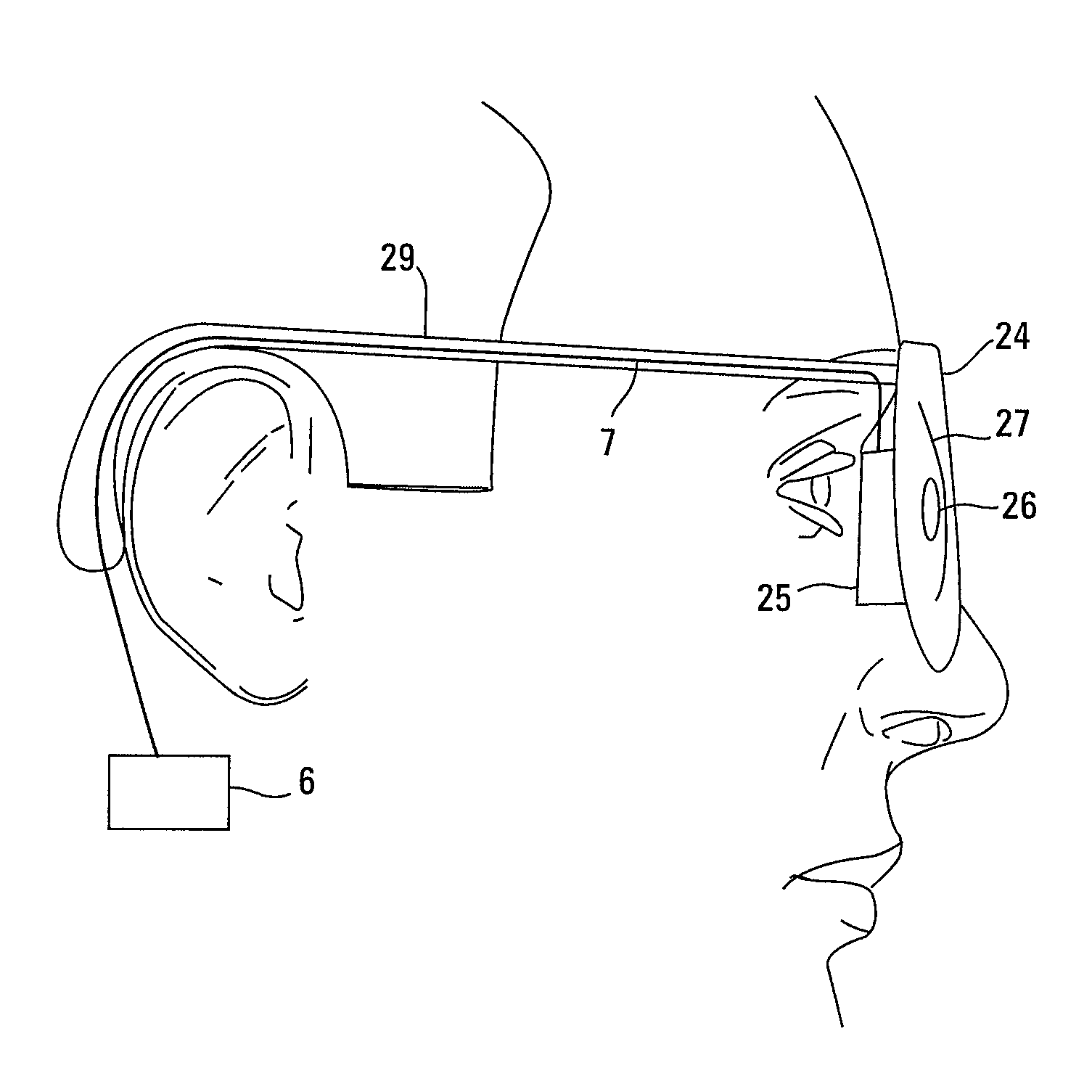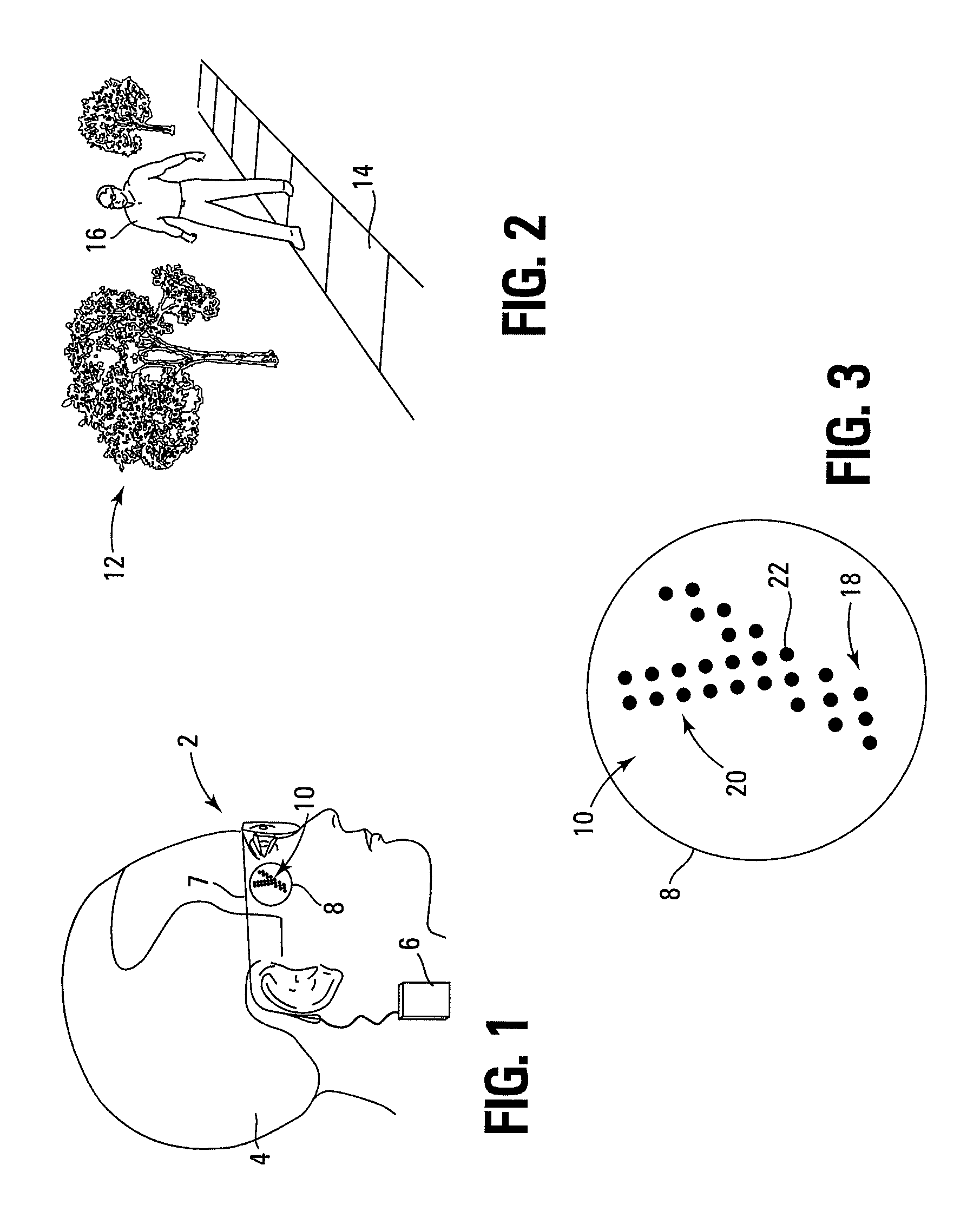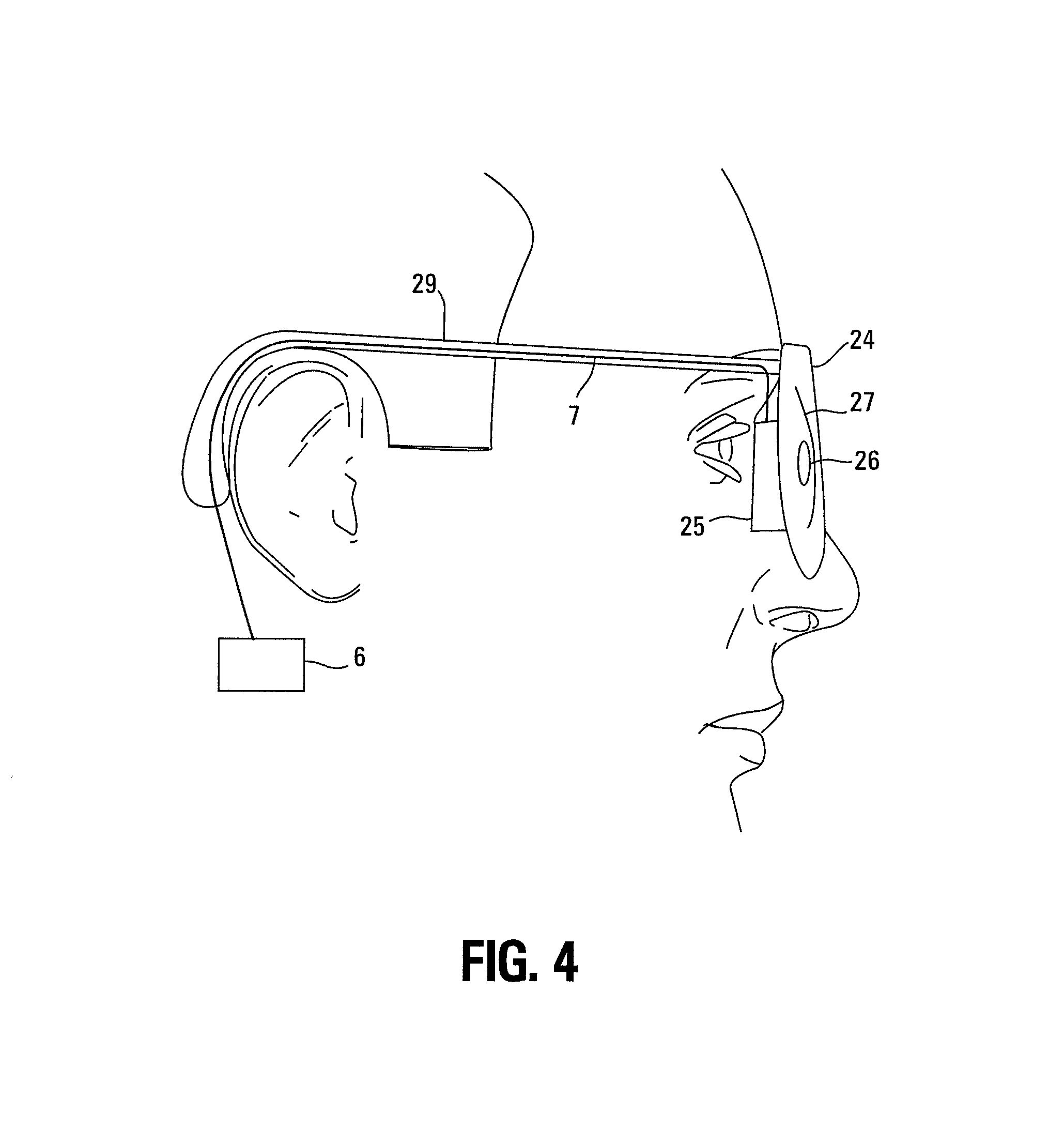Method and apparatus for sensory substitution, vision prosthesis, or low-vision enhancement utilizing thermal sensing
- Summary
- Abstract
- Description
- Claims
- Application Information
AI Technical Summary
Problems solved by technology
Method used
Image
Examples
Embodiment Construction
[0047]Newly available infrared sensing, such as infrared microbolometer array technology, is used for thermal imaging by sensing far infrared radiation, according to certain embodiments of the invention. Methods and apparatus for sensory substitution, sensory augmentation, vision prosthesis, or low-vision enhancement according to embodiments of the invention utilize thermal imaging to detect the temperature profile of objects and surroundings.
[0048]From an operational standpoint, seeing the world in temperature instead of visible light causes important shapes to stand out from the background. For example, the shape of a person's or animal's warm body stands out from a typically cooler background—color of clothing makes no difference. Since the temperature of an object is inherently more uniform than all of the possible colors of light, it is easier to translate the thermal image onto a tactile interface that can be touched. With such a system, the size, shape, and activities of peop...
PUM
 Login to View More
Login to View More Abstract
Description
Claims
Application Information
 Login to View More
Login to View More - R&D
- Intellectual Property
- Life Sciences
- Materials
- Tech Scout
- Unparalleled Data Quality
- Higher Quality Content
- 60% Fewer Hallucinations
Browse by: Latest US Patents, China's latest patents, Technical Efficacy Thesaurus, Application Domain, Technology Topic, Popular Technical Reports.
© 2025 PatSnap. All rights reserved.Legal|Privacy policy|Modern Slavery Act Transparency Statement|Sitemap|About US| Contact US: help@patsnap.com



